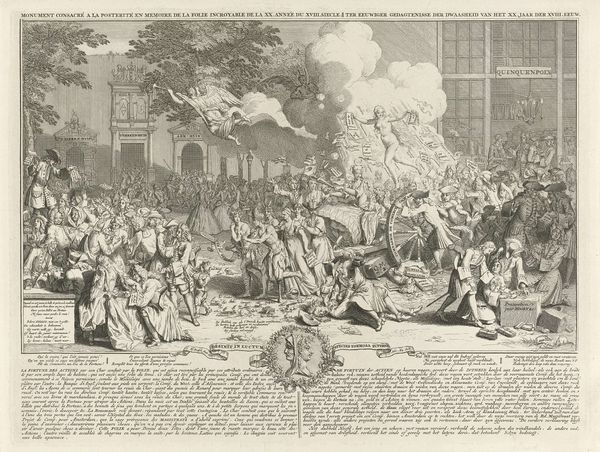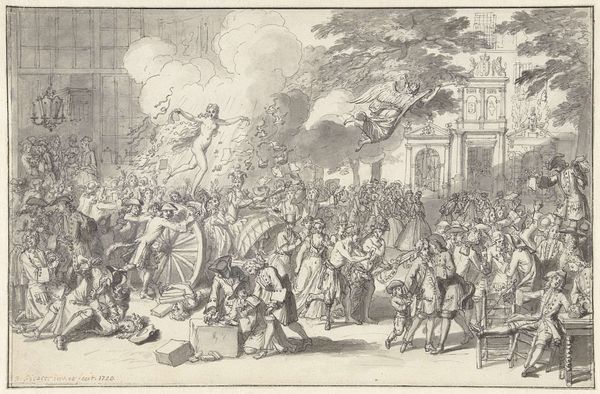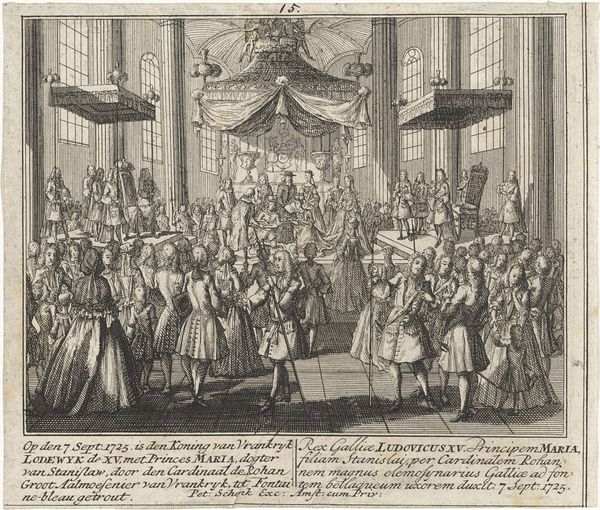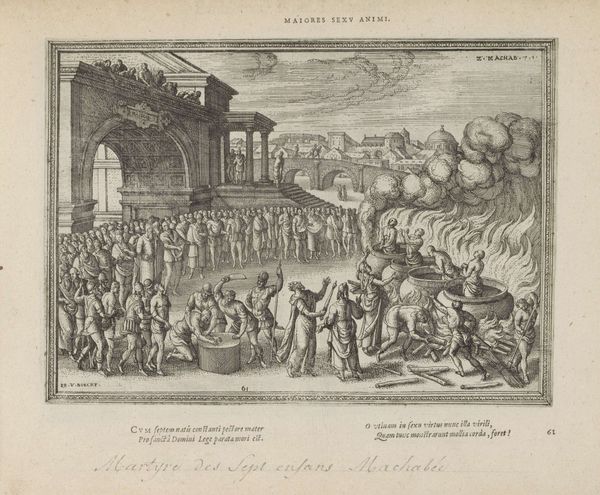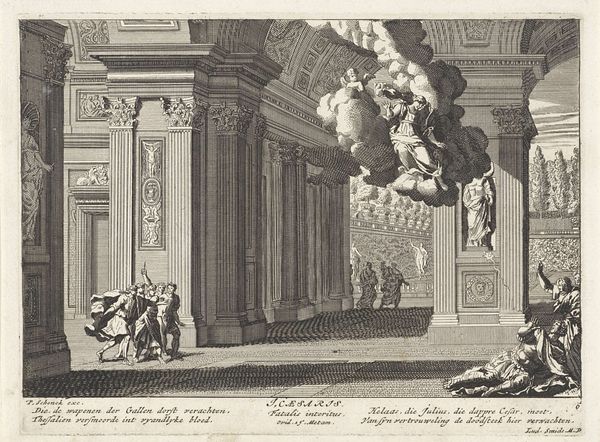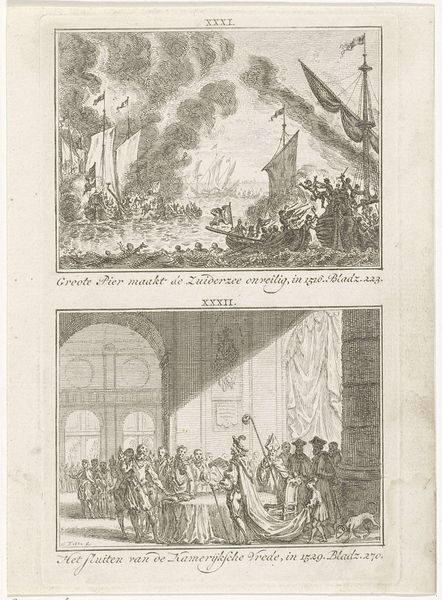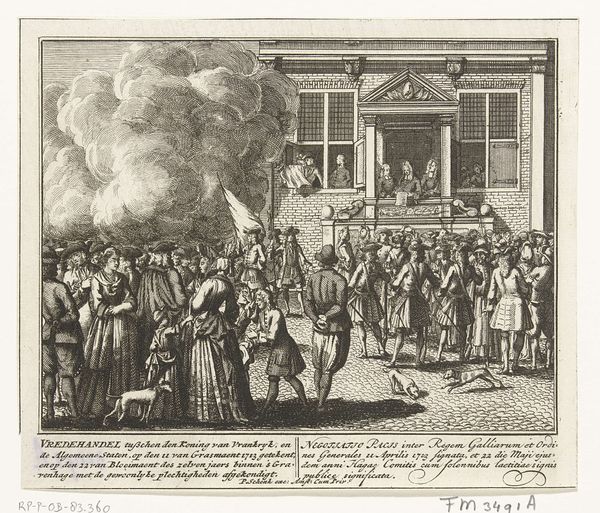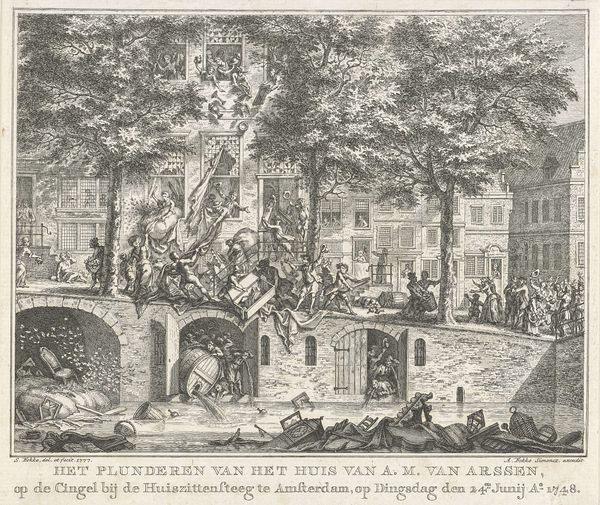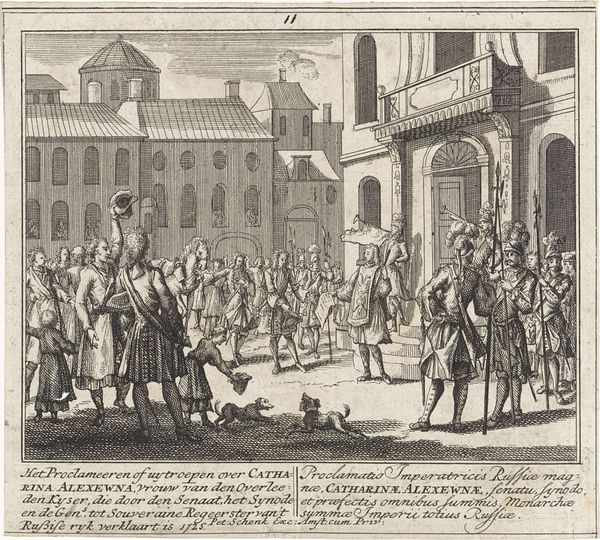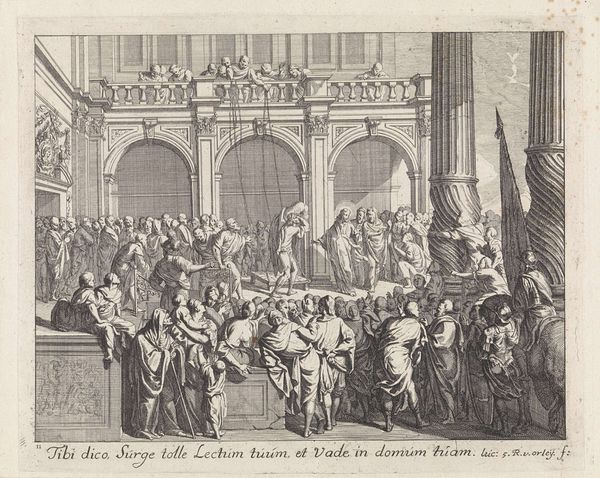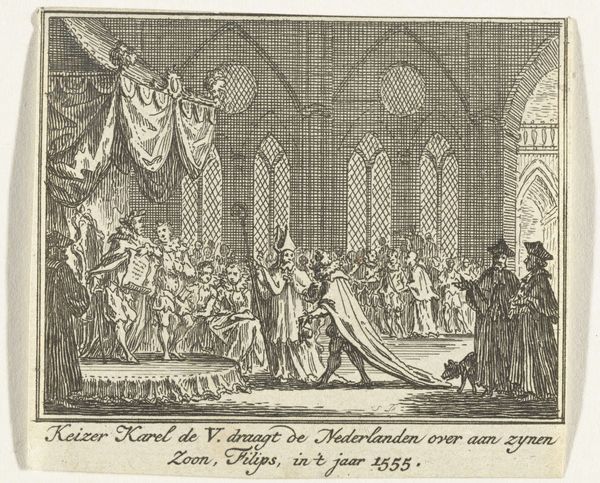
Intrede van landvoogdes Maria Elisabeth van Oostenrijk te Brussel, 1725 1725 - 1727
0:00
0:00
print, engraving
#
baroque
# print
#
pen illustration
#
old engraving style
#
cityscape
#
history-painting
#
engraving
Dimensions: height 154 mm, width 181 mm
Copyright: Rijks Museum: Open Domain
Curator: This print, dating from 1725 to 1727, is entitled "Intrede van landvoogdes Maria Elisabeth van Oostenrijk te Brussel, 1725," or "The Entry of Governor-General Maria Elisabeth of Austria into Brussels, 1725." Editor: It has such a crisp, clean feel for a historical print! The contrast really makes the scene pop; you can practically hear the bustle and ceremony. What kind of paper and ink were used? I'm interested in the production values. Curator: It's an engraving by Leonard Schenk. Looking at the work through a historical lens, the imagery is obviously highly staged to legitimize power. The walls of Brussels become a proscenium, a theatrical space for projecting Maria Elisabeth's authority. We have a procession moving towards the city gate; fireworks exploding overhead give a triumphal aura. Editor: Right, staged. I’m also wondering who made this image, how long it took to produce the plates, and under what conditions the labor was performed. How was Schenk compensated? The very lines composing the walls and faces imply production questions, each incised line the trace of someone's labor. The sheer detail hints at an intense investment of time. Was it piece work, an hourly rate, or what? These prints must have been widely disseminated to communicate this arrival, no? Curator: Exactly. These images were crucial tools for disseminating political ideology and maintaining social order. The baroque style itself communicates status; look at the billowing fabrics, the formal arrangement of figures! Editor: And, of course, how it affected the consumption of related luxury goods and services, all spun out from a few engraved plates! The demand this arrival manufactured; one woman's material impact writ large. It is far removed from a 'naturalistic' depiction and presents an idealized vision for public consumption. A vital insight on how such crafted depictions of leaders were used in governance! Curator: Precisely, seeing beyond just aesthetic pleasure brings vital layers to how we see it. Editor: Agreed. Thinking about it, focusing on how this artwork came to be and its historical usage illuminates not only its production but also its far-reaching societal effects.
Comments
No comments
Be the first to comment and join the conversation on the ultimate creative platform.
